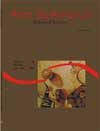Utilização de diferentes dietas na primeira alimentação do mandi-amarelo (<em>Pimelodus maculatus</em>, Lacépéde)
Resumo
Um dos maiores problemas enfrentados na larvicultura de espécies nativas está relacionado à primeira alimentação e à ocorrência de canibalismo para algumas espécies desde o início da vida. Este experimento teve como objetivo avaliar diferentes dietas na primeira alimentação do Pimelodus maculatus. As pós-larvas foram estocadas a uma densidade de 15 pós-larvas/L, em cubas de três litros com sistema de aeração contínua. Os tratamentos utilizados foram: alimentação composta de zooplâncton silvestre nas proporções de 300 organismos/pós-larva/dia (T1); 600 organismos/pós-larva/dia (T2); 900 organismos/pós-larva/dia (T3); 9 náuplios de Artemia/pós-larva/dia (T4); e ração granulada entre 150 e 250 µm (> 50% PB) (T5). Ao final de cinco dias de experimento, o tratamento com Artemia apresentou os maiores valores de sobrevivência (39,3%), menores taxas de canibalismo (28,2%) e maiores valores de peso e comprimento final (P < 0,05), mostrando ser o melhor manejo para alimentação do Pimelodus maculatus nos primeiros dias de vidaDownloads
DECLARAÇÃO DE ORIGINALIDADE E DIREITOS AUTORAIS
Declaro que o presente artigo é original, não tendo sido submetido à publicação em qualquer outro periódico nacional ou internacional, quer seja em parte ou em sua totalidade.
Os direitos autorais pertencem exclusivamente aos autores. Os direitos de licenciamento utilizados pelo periódico é a licença Creative Commons Attribution 4.0 (CC BY 4.0): são permitidos o compartilhamento (cópia e distribuição do material em qualqer meio ou formato) e adaptação (remix, transformação e criação de material a partir do conteúdo assim licenciado para quaisquer fins, inclusive comerciais.
Recomenda-se a leitura desse link para maiores informações sobre o tema: fornecimento de créditos e referências de forma correta, entre outros detalhes cruciais para uso adequado do material licenciado.












1.png)




3.png)













